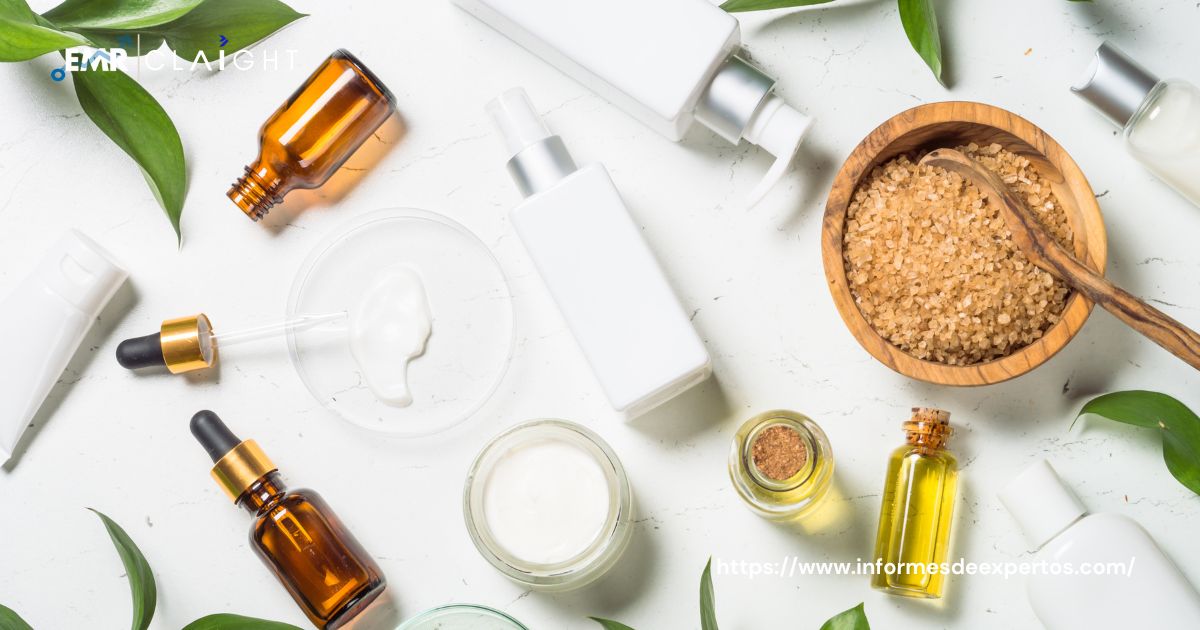The natural cosmetics market refers to the segment of the beauty and personal care industry that focuses on products formulated with naturally derived ingredients. These products are often marketed as being free from synthetic chemicals, artificial fragrances, and preservatives, appealing to consumers seeking more sustainable, eco-friendly, and skin-friendly alternatives. The market has experienced significant growth in recent years as consumers increasingly prioritize health, environmental sustainability, and transparency in product ingredients.
Market Overview:
The natural cosmetics market encompasses a wide range of products, including skincare, haircare, makeup, and personal hygiene items. Ingredients commonly found in natural cosmetics include plant extracts, essential oils, minerals, and vitamins, sourced from renewable resources. These ingredients are often chosen for their purported benefits, such as moisturizing, anti-aging, or soothing properties, and their perceived safety compared to synthetic alternatives.
Market Dynamics:
The natural cosmetics market has been driven by several key factors:
- Consumer Awareness and Demand: Growing awareness of the potential health risks associated with synthetic chemicals in traditional cosmetics has fueled demand for natural alternatives. Consumers are increasingly seeking products with simpler, more transparent ingredient lists.
- Environmental Concerns: The rise of environmental consciousness has led many consumers to seek out products that have minimal impact on the environment. Natural cosmetics often tout their eco-friendly credentials, emphasizing sustainable sourcing, biodegradable packaging, and cruelty-free manufacturing processes.
- Regulatory Changes: Regulatory agencies in various regions have implemented stricter regulations on cosmetic ingredients, prompting manufacturers to reformulate their products to meet new standards. This has contributed to the expansion of the natural cosmetics market as brands seek to comply with evolving regulatory requirements.
- Innovation and Product Development: Advancements in green chemistry and biotechnology have enabled the development of natural cosmetic formulations that rival the performance of their synthetic counterparts. This has expanded the range of natural cosmetics available, appealing to a broader consumer base.
Market Segmentation:
The natural cosmetics market can be segmented based on product type, distribution channel, and geography:
- Product Type: Natural cosmetics encompass a wide range of products, including skincare (e.g., moisturizers, serums), haircare (e.g., shampoos, conditioners), makeup (e.g., foundation, lipstick), and personal hygiene (e.g., soaps, deodorants).
- Distribution Channel: Natural cosmetics are sold through various channels, including specialty stores, online retailers, department stores, and pharmacies. The rise of e-commerce has facilitated the growth of the natural cosmetics market, allowing consumers to access a wider selection of products from the comfort of their homes.
- Geography: The natural cosmetics market exhibits regional variations in terms of consumer preferences, regulatory landscape, and market maturity. North America and Europe are among the largest markets for natural cosmetics, driven by strong consumer demand for organic and eco-friendly products. Emerging markets in Asia-Pacific and Latin America are also experiencing rapid growth as consumers become increasingly health-conscious and environmentally aware.
Challenges and Opportunities:
Despite its rapid growth, the natural cosmetics market faces several challenges, including:
- Ingredient Sourcing and Supply Chain Management: Ensuring a consistent supply of high-quality natural ingredients can be challenging, particularly for small-scale producers. Issues such as seasonal fluctuations, crop failures, and geopolitical instability can impact ingredient availability and pricing.
- Certification and Standards: The lack of standardized definitions and certification criteria for natural cosmetics can lead to confusion among consumers and undermine trust in the market. Establishing clear, internationally recognized standards for natural and organic cosmetics could help address this issue.
- Competition from Conventional Cosmetics: While consumer demand for natural cosmetics is growing, conventional cosmetics still dominate the market. Natural cosmetics companies must compete with established brands and invest in marketing, product innovation, and distribution to gain market share.
Despite these challenges, the natural cosmetics market presents significant opportunities for growth and innovation. Continued consumer demand for safe, sustainable, and efficacious beauty products, coupled with advancements in ingredient technology and manufacturing processes, are expected to drive further expansion of the market in the coming years.
